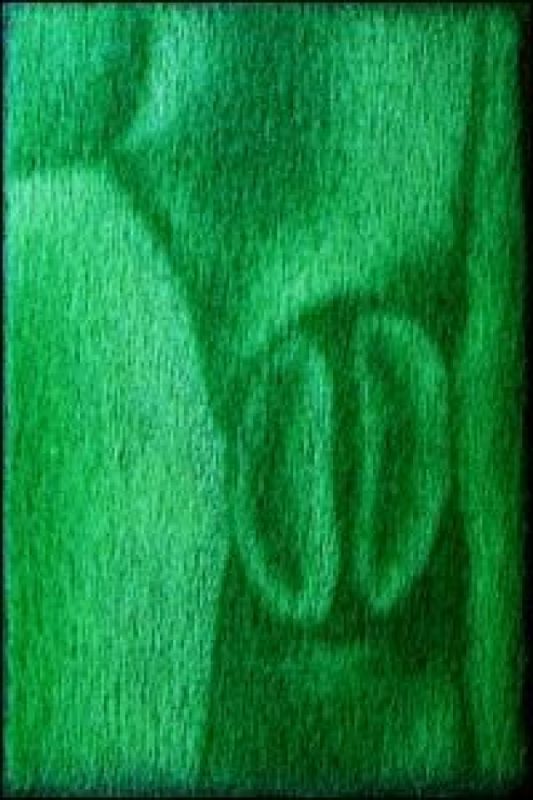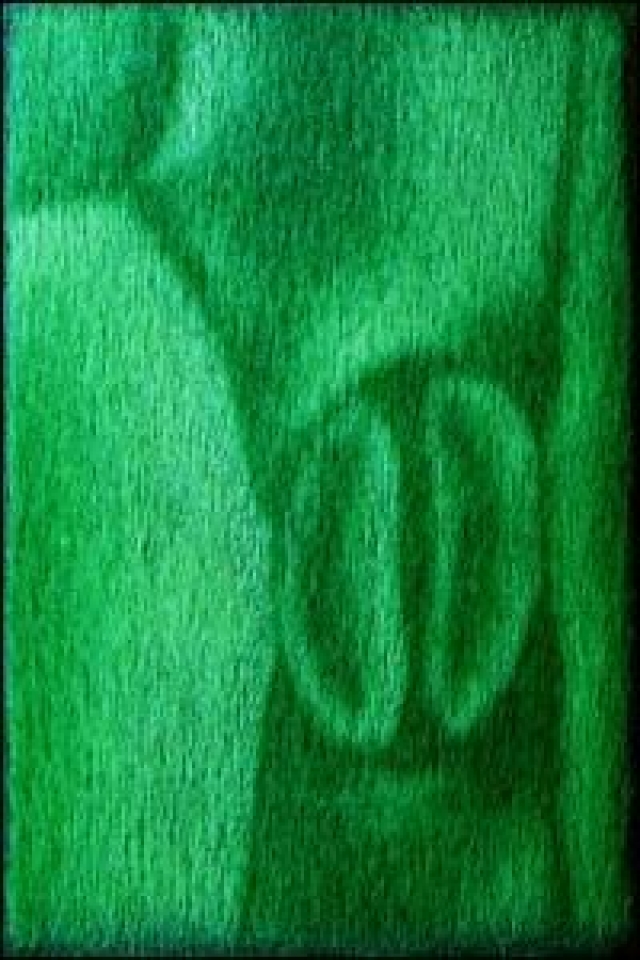
The equivalent tonal range developed in a black and white photograph is created in the grass photograph in shades of yellow and green.
These organic photographs are realised through the light-sensitivity of the pigment chlorophyll and as such, light can corrupt the visible image. In a living state the grass photograph can exist in subdued light for short periods. In time though the image inevitably fades taking on a quality akin to an old tapestry and, as the contrast lessens, there comes a point when the image disappears.
The transient quality of these chlorophyll photographs has an evocative power, which holds importance for the artists. It also became a concern to explore the possibility of retaining the picture more permanently in the grass.

